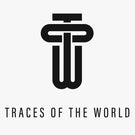Hand Weaving Techniques
Our artisans work with one of the world’s most sustainable textile manufacturing techniques, the ancestral loom. Our makers’ environmental footprint is drastically lower than conventional manufacturing practices. Sustainably sourced and made with these age-old, small batch craft techniques have low carbon emissions and less negative traces on our planet.
Weaving in an ancient Mexican craft that dates back to between 900 and 200 BC. Mexican weaving originally began with the weaving of grasses to form baskets for storage and transposrting goods using native fibers, such as cotton, cactus yucca, agave and maguey. The indigenous people then learned to cultivate and process cotton to make cloth. They then made natural dyes for the cloths using insects, plants, minerals, shells, and animals. They created beautiful woven clothing to wear, but also as a means to trade and pay tribute. Oftentimes, th epatterns of these woven textile tells a story specific to its geaographical significance.
The first weaving tool used by the indigenous people was the backstrap loom (Telar de cintura). The weaver would attach one end of the loom to a stationary object (usually a tree), with the other end wrapped around the weaver. When using a backstrap loom, the weaver would sway their body to change the tension on the threads. The width of the cloth is limited to the reach of the weaver, typically creating pieces that are only 26 inches wide. These factors makes it an incredibly time consuming and physically demanding tool to operate. A piece could take up to several months to complete.

